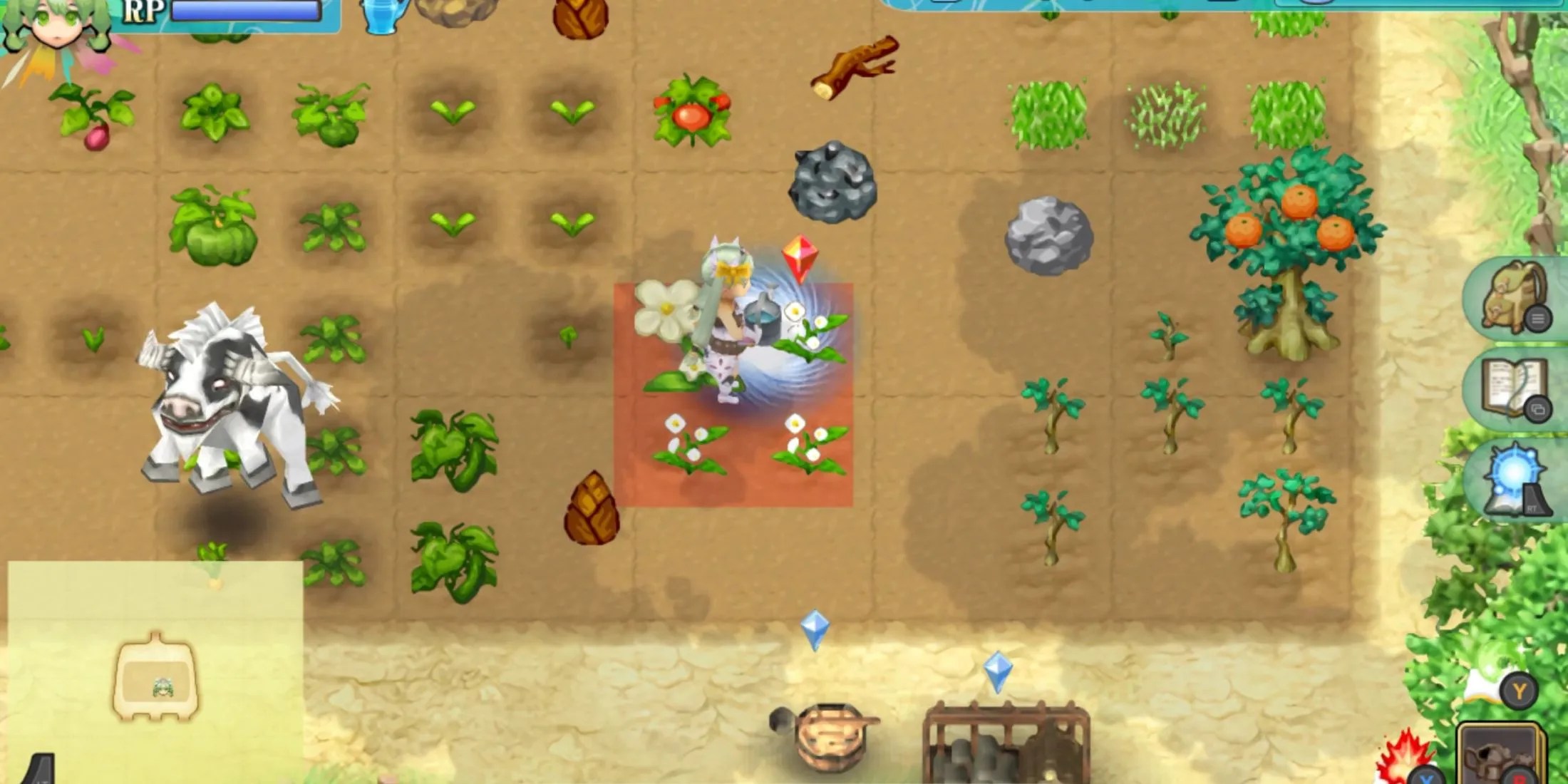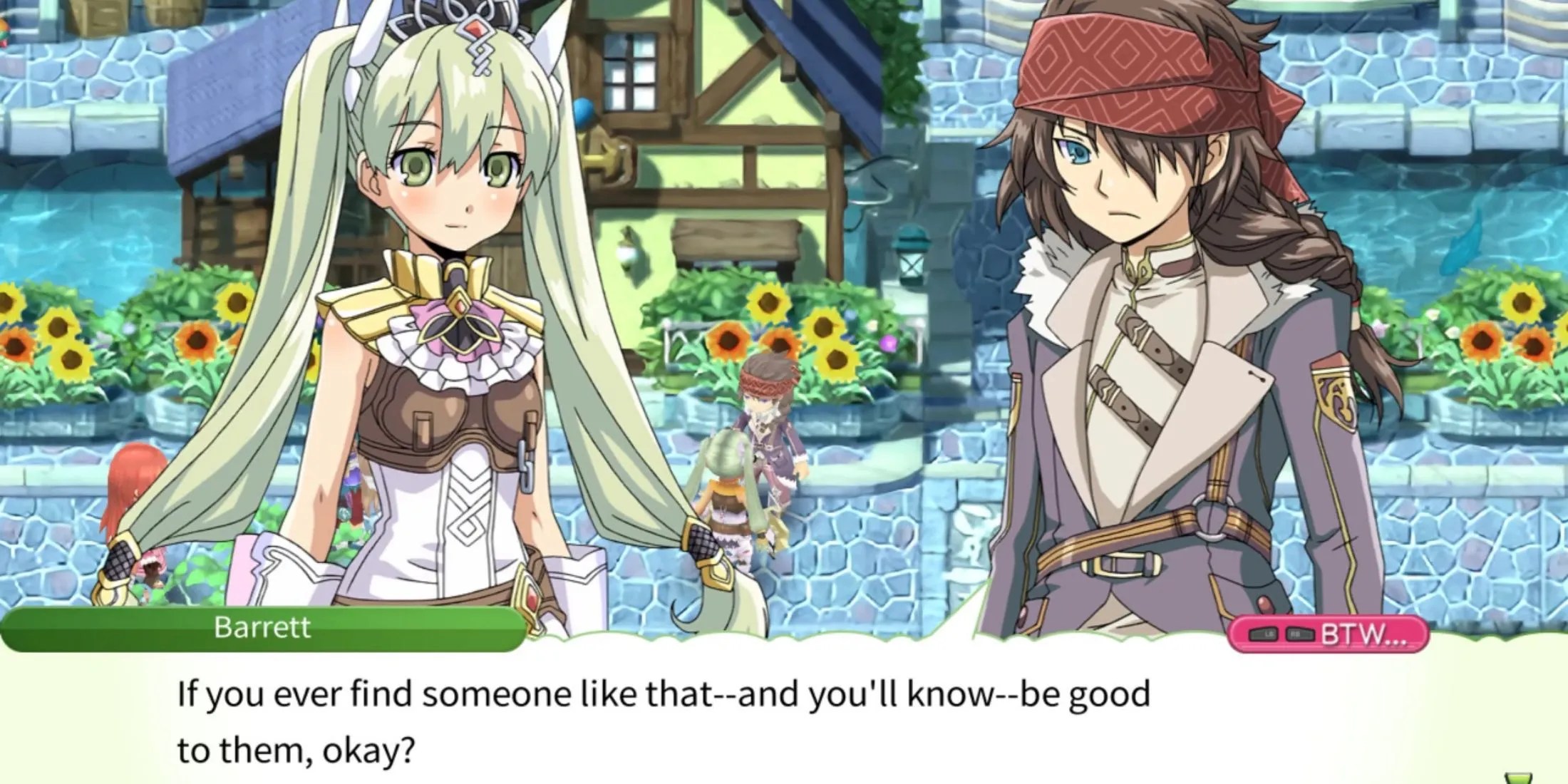Summary
The RPG genre is home to some of the mostwell-loved and widely respected gamesin gaming, a virtually endless list of exceptional titles that spans several generations, universes, and consoles. Within the genre, games often bring in an element of management to add to the immersion and give the player’s actions meaning in the world.
Having a collection of NPCs that the player can watch over and complete tasks for is a nice way of mixing up the gameplay, as well as opening the door for some story progression opportunities down the line. Many games include it as a sort of afterthought and don’t fully delve into the possibilities. Others, though, make the most of the feature and push it to its limit in terms of customization and player interaction.

Town management inEiyudenis woven tightly into the game’s progression loop, and the involvement with the village only grows as the game goes on. After an earthquake devastates New Neveah, players take on the task of rebuilding it, completing quests, gathering materials, and recruiting NPCs to unlock new shops, services, and story events. The restoration is gradual and deeply satisfying, giving players a strong sense of ownership over the town’s recovery.
While the system is more streamlined than others, it still has all the same impact in a condensed form. Town upgrades influence gameplay by improving gear and building out the central hub in a way that’s accessible but meaningful. The management system is simple to grasp, yet rewarding over time. Rather than distracting from the game’s RPG elements, it enhances them by tying players' efforts to visible, lasting change.

InRune Factory 4, players don’t construct buildings manually, but they do influence nearly every part of the town’s evolution in unique and interesting ways. Through the Order system, players can unlocknew shops, festivals, dungeons, and features that shape daily life. They can transform the management from architecture into governance that places a bigger focus on relationships and seasonal events that reflect the town’s changing dynamic.
What sets the game apart is how town life becomes central to progression. The townspeople aren’t just background characters. Instead, they’re integrated into every aspect of the management and gameplay, from combat to farming. Town decisions ripple through every system. While the game may be less about physical construction, the idea of curating a living, breathing community where every choice matters is more than enough of a draw.

Suikoden2trades basic and traditional town building for an evolving castle headquarters that changes dramatically based on the player’s actions. As members are recruited to join the stronghold, the area expands with new facilities like a blacksmith and several stores, both for utility and for combat. Every character feels alive with unique personalities and dialogue, making the castle feel full of life in no time.
The systems directly tie into the story in a cohesive and non-invasive way, rewarding persistence and exploration with fruitful characters and storylines. The transformation of a quiet fortress into a bustling center of activity comes naturally and merges well with the player’s progression. Every addition feels earned and narratively grounded.

The Georama system inDark Cloud 2challenges players to rebuild destroyed towns by traveling through time and collecting materials in order to reclaim a piece of the former glory. But there is so much more to it than that. Placing trees in certain spots orpairing NPCs correctlyunlocks story events and bonuses in the future, which means that decisions are more than just aesthetic; they are functional to character development.
The satisfaction comes not just from creation, but from reconstruction. As towns are restored, players watch their choices affect a future version of the world in ways both big and small. It’s a rare system where layout, structure, and character placement carry narrative weight, which turns simple base building into a core mechanic that is no longer a side distraction, but the main event.

Dragon Quest Builders 2blends open-world exploration with guided base development across several islands that can each house their own thriving and unique towns. Each area that players rebuild brings new villagers, blueprints, and threats, all of which feed into a lively, evolving settlement that feels distinct in the genre.Unlike traditional RPGs, creativity is encouraged and specifically ties into villagers' behavior and mission outcomes.
The game’s charm lies in how the building supports the broader narrative. Defenses need constructing before attacks, and townspeople rely on the player for everything from food to morale in a tightly woven system that rewards thoughtful planning and building. The game captures balance between freedom and function perfectly, in a way that few other contemporaries have.

InBannerlord, players can conquer and manage castles, villages, and towns within a dynamic medieval world in a way that is less about physical layout and more about governance. Players can easily and manually set tax rates and are forced to manage loyalty, queue construction projects, and assign governors to oversee the towns when the player is not around. Every choice feeds into a broader geopolitical strategy and affects long-term stability as a whole.
It’s complex because it’s interconnected, as mismanaging a town can lead to rebellion and economic collapse, and in some cases, invasion. Well-run settlements become economic powerhouses and recruitment centers that can grow into kingdoms that are both feared and respected. The system emphasizes long-term planning and leadership over aesthetics, making it one ofthe most realistic and involved town managementmechanics in any RPG.

The town building inNi no Kuni IIis not just a background mechanic, but an essential part ofbuilding out the world and the story. Players recruit citizens to Evermore and build specific structures that are tailored to house certain NPCs and to unlock additional skills and technologies. Each individual is different and brings their own traits, so assigning them correctly is important to ensure fast research in order to gain access to powerful upgrades to help in combat and exploration.
The system excels at creating a scalable environment where every decision matters and serves a function both in gameplay and the narrative. Progression feels closely tied to kingdom expansion. Both time and resource management play a major role in the success of the player, making every upgrade feel like a leap in progress in this unique RPG that feels more like a kingdom sim.

At its peak,Fallout 4’s settlement system transforms the player into a post-apocalyptic city planner with all the autonomy they could ever want. Using scavenged materials, players build housing fully equipped with a range of defenses, water systems, and power grids, all of which are not limited to a single location. The settlers can be assigned to several different jobs, and every aspect of the management system ties together to create a stable and functioning economy.
What sets it apart is how systemic and scalable it is. It’s not just one base but a huge network that can span for miles, all interconnected and working in unison to survive in the harsh, barren land on the surface. Settlements affect faction quests, and even the game’s ending. With no hand-holding and infinite freedom, the game offers one of themost complex and rewardingbase-building systems in any open-world RPG.

